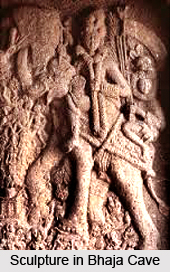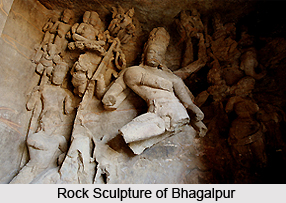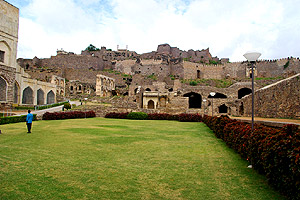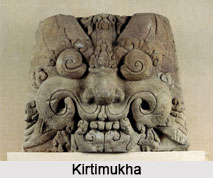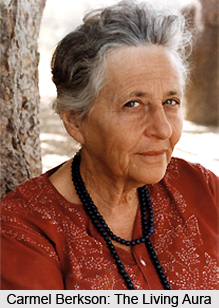 Carmel Berkson is the Indian-American Sculptor whose contemporaneity in the domain of art has been the key to modern aesthetics. What unfurled as an intercontinental jaunt turned into a lifetime and enduring passion for a culture and a place that has become her adopted domicile a homeland beyond the limits of time space and consciousness only to be refuelled by the fuel of inner calling, the artistic life force. Originally from New York, Berkson arrived at Duke as World War II played out on the global stage. Although she was artistically inclined, the lack of any art courses to speak of compelled her to major in history. "Then as now," says Berkson, who lives in Mumbai, "the study of history leads us into all else."
Carmel Berkson is the Indian-American Sculptor whose contemporaneity in the domain of art has been the key to modern aesthetics. What unfurled as an intercontinental jaunt turned into a lifetime and enduring passion for a culture and a place that has become her adopted domicile a homeland beyond the limits of time space and consciousness only to be refuelled by the fuel of inner calling, the artistic life force. Originally from New York, Berkson arrived at Duke as World War II played out on the global stage. Although she was artistically inclined, the lack of any art courses to speak of compelled her to major in history. "Then as now," says Berkson, who lives in Mumbai, "the study of history leads us into all else."
Early Life of Carmel Berkson
Born in New York in 1924, she has majored in history at the Duke University and after graduation, studied sculpture at the Columbia University under Milton Hebald. She is married to Martin Fleisher a batch mate of hers from Duke. She was weirdly unconscious that a sudden revelatory trip to India would change her life forever painting the canvas anew afresh. Year was 1970, when Carmel unaware came face to face, in their indigenous context, with the exclusively diverse aesthetic meanders of the cave and temple sculptures here.
As she herself observes: "Once I was exposed to the Indian monuments there could be no turning back. In regard to my own work, the shock of discovery and the subsequent photographic studies at many sites in India deepened my understanding of what is possible when a society is organized for the purpose of maintaining the traditional heritage."
Instantaneously entranced by what she found before her eyes could see, senses could feel during excursions to such ancient sites as the far-reaching and intricately carved caves at Elephanta Island, Ellora, and Mahabalipuram. Berkson was so moved by the squashed energy and ancient tradition intrinsic in the sculptures that she felt constrained and intrigued to put aside her own work to learn more about that of India. Having become ensnared by the country`s innate sculptural traditions, Carmel Berkson`s key focus on study for the duration of the historical forty years has been the aesthetics and outlined life of Indian art.
Career of Carmel Berkson
Berkson is noted for her documentation and commentary on Indian art as well as her own work as a sculptor. Carmel travelled extensively to innumerable sites all over India, photographing and documenting them for her research. Primarily her focus was on understanding the unique aesthetic which was entirely distinct from the stylistic transformations with which she was familiar. She read texts concerning the systems of proportions and iconographical representations of the religious and mythological subjects of India, while continuing her travels, investigations and researches in the Indian civilization.
In 2001 Carmel Berkson returned to her first love the making of sculptures in clay for casting into bronze. Her new works are inspired by her long involvement with the History of Indian Sculpture. These new creations rely heavily on Traditional Indian sculpture, even while her own stylistic past is in evidence. The original, unique underlying structure and the life of the interacting shapes and forms, the configurations and iconographical identifications have been retained in contemporary form. In the process of making art the conscious level actually takes a subordinate role; rather, the ever-attractive eye instinctively operates to order diverse elements into a mobile entity. Most of her sculptures replicate the renditions of figures from Indian mythology but reflect cubist influences in their depiction. Her work while drawing from and alluding to Hindu, Christian and Buddhist Mythology are noted for their simple, clean forms that reflect a modern aesthetic.
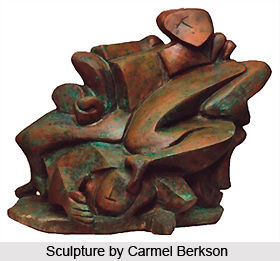 Contribution of Carmel Berkson
Contribution of Carmel Berkson
Outfitted with a camera, an artist`s sensibility, and a historian`s curiosity, she stands straight contributing conspicuous galore to Contemporary Indian Art and Contemporary Indian Sculpture. For Carmel Berkson, India has been the home where her heart is. It is here in the ancient caves and medieval temples - that the 86-year-old American sculptor discovered her artistic calling nearly four decades ago. Still, this year remains special for her. The show titled `Retrieving the Connection` is Berkson`s last before she retires from work and returns to the US.
She has published five books of photography and criticism based on her discoveries and insights. Her most recent,Indian Sculpture: Towards the Rebirth of Aesthetics came out in 2009. Earlier this year, she was one of only a few non-Indians selected to receive the Padma Shri Award, India`s fourth-highest civilian honour, for her contributions to the appreciation and understanding of Arts In India.
She expresses the hope that dormant cultural dynamics can be reawakened after depth encounters with the great sculpture of India. Hopefully this will result in revitalized native art forms.
Understanding and focus, a connection with the form-life embedded in the cave temples and Hindu temples in India will have beneficial results for the aspiring artist. The statues she has carved are imbued with Rasa or quintessential essence that embodies all legitimate Indian art in its authentic form. While the style is modern and individual, the spirit is ancient and universal. Religion, philosophy art and culture are inextricably liked into the sculptural bodice of Indian art as is depicted by her inimitable works.
Berkson is the author of several books on Indian art. These include Elephanta, the cave of Lord Shiva, and The caves at Aurangabad: early Buddhist Tantric art in India, The divine and demoniac: Mahisa`s heroic struggle with Durga, Ellora, concept and style, The life of form in Indian sculpture and Indian sculpture: towards the rebirth of aesthetics.
Although styles of east and west do differ substantially, nevertheless, underlying structures and many factors influencing the life of form are often ubiquitous. At the level of the collective unconscious, artists from different cultures, working in separate historical periods, often share those fundamental characteristics that can be identified as authentic works of art. At the deepest levels of the unconscious, the sources of artistic responses may often be comparable. Carmel Berkson`s works reflect such!
